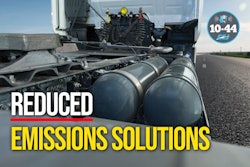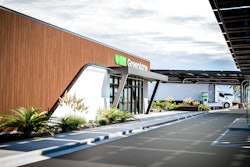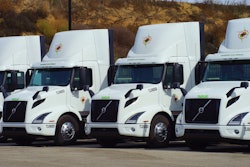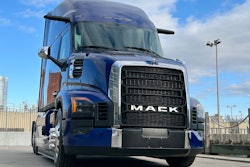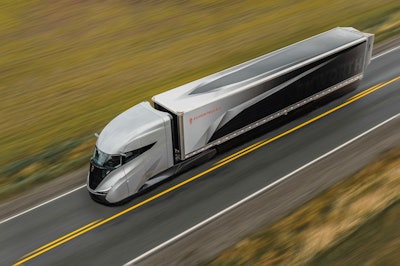
In the automobile space, there seems to be a growing interest in hybrids. Given some of the infrastructure problems, costs, and range issues with battery electric vehicles (BEVs), most major automotive manufacturers are offering hybrid powertrains.
Why haven’t we seen these powertrains take-off in the commercial vehicle space? Will we see hybrids in Class 4 to 8 trucks in the next 10 years? My bet is yes. The question is to what extent. The other major question is whether hybrids will be a “regulation-only play” or something that creates value for OEMs and fleets.
There is a range of hybrids starting with mild hybrids that power accessories ranging to hybrid electric vehicles (HEV) and plug-in hybrid electric vehicles (PHEV) that drive or help drive the vehicle. HEVs have a small battery and motor that help the engine provide power. HEVs reduce fuel consumption and emissions. For every 1% reduction in fuel, there is a 1% reduction in CO2. PHEVs have a larger battery and motor than the HEV. The battery can be charged overnight, and the vehicle can run in the full electric mode for some duty cycles.
The production implementation of hybrids has been limited to transit buses in the Class 4 to 8 space. BAE and Allison have sold tens of thousands of hybrid powertrains in the transit bus market. However, there are very few examples of hybrid powertrains in the Class 4 to 8 commercial vehicle space in the United States.
Why haven’t hybrids taken off?
Some describe hybrids as the “best of the best” and others describe them as the “worst of the worst.” Those who are not advocates mention the cost, complexity and their inability to meet zero-emission vehicle (ZEV) criteria for the Advanced Clean Truck Act (ACT). As for cost and complexity, it is true that the powertrain content increases. In addition to an already complex engine and aftertreatment system, the following items need to be added: battery, high-voltage cables, motor/generator, and power electronics. It takes a major effort and significant cost to develop, integrate, and certify this combination. Since the hybrid portion is part of the EPA certification process, the electrical components become “emissions components,” meaning they need to be part of the emissions warranty and require a significant effort to become certified.
But now the industry is talking about potential changes in regulation. None of us know the outcome, but there is the possibility that the ACT might be revoked or relaxed. This is the rule that mandates that a certain percentage of trucks sold be ZEVs. We also have EPA regulations such as the Ultra Low NOx and Greenhouse Gas(GHG) Phase 3 rules. Suppose ACT goes away or is delayed, and GHG Phase 3 stands but is relaxed or delayed. Can hybrids be a good lever to meet regulations in whatever form they take?
The current administration is reviewing the above rules and we don’t know whether this means that the standards will be eliminated altogether or relaxed by delaying the effective dates and/or reducing the thresholds.
Figure 1 illustrates the CO2 reduction required by year for each vehicle class/type under current GHG rules. If we think about the benefits of hybrids in applications such as medium-duty, regional haul, and some vocational applications that have a lot of “stop and go,” we can see fuel reduction in the 20% range. This translates directly to CO2 reduction so hybrids could allow the OEM to meet a lot of the existing regulations. Add in some tire and aerodynamics improvement, and this combination goes even further. There are concepts that were identified in SuperTruck 2 (described below) that show even higher CO2 reduction than 20%.
What have we learned from SuperTruck 2
There are some key takeaways from the SuperTruck efforts.
Several major truck OEMs developed a mild hybrid as a part of the SuperTruck 2 program. Kenworth claimed a 136% improvement in freight efficiency, and a mild hybrid contributed a small portion to this improvement. The company employed lithium-ion batteries that were recharged through regenerative braking. The 48-volt battery was used to operate electric fans, electric steering, HVAC pumps, etc. Kenworth said the fan alone can draw 80 horsepower.
It was noted in a NACFE Messy Middle Boot camp session that some of the OEMs are incorporating 48-volt alternators to meet the EPA27 low NOx rule. While no OEM has announced a mild-hybrid, the potential exists, and a 48-volt system could be used for overnight e-hoteling and electrifying auxiliary components.
International Motors’ (formerly Navistar) SuperTruck 2 entrant demonstrated the potential of a hybrid powertrain, exceeding 16 MPG in long haul. At the March 2024 TMC conference, International Motors reported a 5% to 60% fuel economy improvement by using a hybrid and sophisticated controls. The company evaluated the system under three different duty cycles. As for long-haul routes, International reported a 5% to 9% improvement with the larger value in hilly terrains throughout the U.S. The 60% savings certainly is a best-case scenario, requiring a lot of stop and go, system integration and navigation features. An illustration of what was presented and the key aspects of the heavy-duty hybrid are shown in Figure 2.
Are any in production now?
While Scania is a European play right now, the company is offering an HEV and PHEV. This truck also can run on hydrotreated vegetable oil or biodiesel. This is a great example of an alternative fuel solution while in the messy middle. Battery size ranges from 30 kilowatt-hour (kWh) to 90 kWh for the HEV and PHEV, respectfully. The HEV has a 90 kilowatt (kW) motor and the PHEV has a 230-kW motor and offers a 60-kilometer range. It is worth noting that regulations might be a driving force for the introduction of this product. Europe has its own version of GHG standards, and the fines for noncompliance are steep. By 2030 and beyond, a penalty of 6800 Euro for each CO2 gram per ton-kilometer (g/tkm) in excess of the emissions will be imposed. This can result in millions of dollars per truck model for a truck company.
Looking a little closer to home, we know that major Tier I suppliers such as BAE, Dana, ZF, and Cummins/Accelera have components for hybrids. At the Hannover truck show in September 2024, ZF announced a new hybrid product. It is not specific to North America, but the company is talking about them. Cummins talked about hybrids at SAE’s COMVEC conference and about hybrids potentially being a part of their future solution set.
How can we take a complete system approach, leveraging hybrids, and creating value?
As we look into the future and try to be green and improve the bottom line, what type of hybrid might be a good alternative? One idea would be to use the playbook of the SuperTruck 2 program and optimize at the vehicle level.
More specifically, some of the add-on costs could be offset by downsizing the engine. A 15-liter engine could be replaced with a 13- or 10-liter engine. If the motor and the battery are properly sized, the combination of the engine and motor would provide adequate performance. The durability and the accompanying residual value of the smaller engine is an area of concern. However, with today’s technology and data analysis capabilities it seems plausible that this could be overcome by finding the weak points and making them more robust.
Relative to a Class 8 long-haul BEV, a hybrid can run with a smaller battery. A typical Class 8 BEV has 400 to 900 kWh of battery on-board. Some studies show that a plug-in hybrid with a battery sized as small as 100 kWh can provide a lot of range and allow the vehicle to run fully electric and benefit from the regenerative energy. Depending on the route and vehicle’s duty cycle, the fleet might be able save on chargers and trickle charge at night.
Controls also would be a big part of the hybrid recipe. Navigation systems and controls can be integrated and smart use of the engine versus the battery could be employed. For example, if the vehicle was approaching a hill, the battery/motor combination could be used to climb the grade with the engine off or running in its sweet spot. The battery could then be recharged when the truck was going down the hill — that is free energy
You also could add in a little renewable fuel to reduce the engine’s CO2 output.
This recipe can hopefully bring the upfront costs down and provide significant fuel savings, making hybrids attractive for fleets. The OEMs could meet a lot of the GHG Phase 3 standards as they exist today. We are in interesting times.




